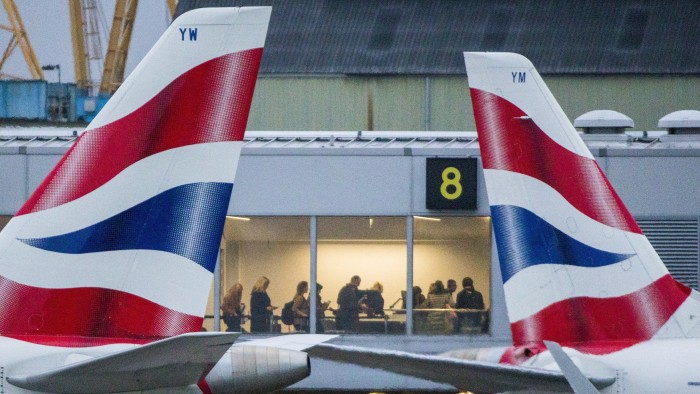Unlock the White House Watch newsletter for free
Your guide to what the 2024 US election means for Washington and the world
The writer is president of Queens’ College, Cambridge, and an adviser to Allianz and Gramercy
The image of business leaders, governments and investors having to drink out of a US policy fire hose has gained added complexity in the past week as President Donald Trump announced a sudden pause on high “reciprocal” tariffs that had been repeatedly characterised as permanent.
The result whipsawed financial markets and upended Wall Street’s short- and longer-term economic forecasts. To make sense of all this, let me suggest four takeaways, from the certain to the less known.
Trump’s 90-day pause applied to all countries except China, which the White House says still faces an incremental tariff rate of 145 per cent and which has applied its own retaliatory surcharges and other restrictions on the US. By contrast, the EU postponed its retaliation, waiting to see whether there would be a further pause, a repressing of the play button or a rewind. Like others, it is also keen to see what Trump is thinking on company-specific concessions.
Moving from the what to the why, the recent flood of comments from high-level administration officials has had a common element: the role of the bond market. It seems that they realised the critical US Treasuries segment was getting very close to the line that separates unusual volatility from market malfunctioning, where buyers and sellers cannot find a price to transact.
That happened in 2008 and 2020, spreading disruption through markets and the economy at home and internationally, and necessitating major circuit breakers from governments and central banks.
Other factors contributing to the pause included stark public warnings from prominent figures such as JPMorgan Chase CEO Jamie Dimon. I also understand that there was an avalanche of worried calls to the administration, Congress and the Federal Reserve. Then came a classic attempt to evolve the narrative to fit what has happened: the pause was the plan all along, triggered after more than 70 countries contacted the administration to engage in negotiations with a view to reducing tariff and non-tariff barriers against the US.
At the start of a televised cabinet meeting last Thursday, the president reinforced the notion of a bumpy journey, pointing to “transition costs” and “transition problems”. After all, volatility is a feature and not a bug of the Art of the Deal. The key thing for American households and companies to remember is the inevitably attractive destination.
This leads to the third point: the potholes on the journey. There are execution risks relating to the immediate stagflationary winds; the interaction with the deregulation and the so-called Department of Government Efficiency agendas; containing major market dislocation; and getting other countries to make significant concessions in the hope of decisively ending the threat of trade wars and investment sanctions.
Meanwhile, judging from gold prices and other partial indicators, countries seem to have accelerated diversification away from an America seen as eroding its safe haven status at the centre of the global economic and financial order.
There are also operational risks. It is not easy to negotiate with so many countries all at once, each in a differentiated manner, while also applying company-specific concessions. And this spaghetti bowl only succeeds if the administration can resolve internal differences on the primary objective of this trade war. Is it to impose fairer trade in a world of low or zero tariffs, or to raise significant revenues and permanently reshore production? If anything, public disagreement has grown in the last two weeks.
One side believes the outcome of all this is a broader Reagan/Thatcher rewiring of both the US and global economy. The US would emerge competing on a level playing field with a more enabled private sector and a slimmed down, more productive government. The other believes that would result in the US languishing in Jimmy Carter-style stagflation with the adverse global spillovers accentuated by China-US tensions.
The bottom line is clear. The volatility of the past two weeks has established without doubt that the US has taken its economy, and those of other countries, on an uncomfortable journey to an uncertain destination. This will severely test the financial system and America’s global standing, including its ability to counter China’s efforts to portray itself as the better immediate and longer-term partner.




